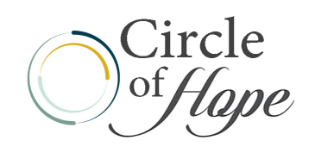
Opioid use disorder treatment can be approached in many different ways. It can range from outpatient drug rehabilitation to intensive inpatient drug rehabilitation to daily home-based opioid use disorder treatment, depending on your situation and the type of opioid use disorder you are dealing with.
This post will discuss all of these options in-depth and help you figure out which option will work best for you. We will also answer some of the frequently asked questions about opioid use disorder.
What Is Opioid Use Disorder?
An opioid use disorder, or OUD, is a medical condition. It’s more than just drug abuse. It’s when people can’t stop using opioids even though it causes them significant problems in their daily lives.
They may also continue to take opioids when they no longer want to because of intense cravings. Many people who have an OUD also have mental health issues like depression and anxiety disorders.
Some may turn to alcohol or other drugs and self-harm behaviors (like cutting) as a way to cope with feeling so bad about their drug use. Using multiple drugs at once is called polysubstance misuse and is one of many risks associated with having an OUD, including overdose and death.
Who Gets Addicted To Opioids?
Anybody can get hooked on painkillers, but it’s not simply a matter of willpower. Most people who abuse opioids get prescriptions from their doctors for pain relief after an injury or medical procedure.
The key is that if you go beyond using as prescribed (for instance, taking higher doses or using more frequently than recommended); you’re at risk of becoming addicted to opioids.
Types Of Opioids Commonly Prescribed
The most commonly prescribed opioids for chronic pain, based on a national survey by pain management specialists in 2016, are hydrocodone (Vicodin), oxycodone (OxyContin), Morphine, and codeine.
Here is a list of the most commonly prescribed opioids, according to the CDC.
- Hydrocodone (Vicodin®)
- Oxycodone (OxyContin®, Percocet®)
- Oxymorphone (Opana®)
- Morphine (Kadian®, Avinza®)
- Codeine
- Fentanyl
- Hydromorphone
- Tapentadol
- Methadone
Counterfeit Pills And Fentanyl Exposure
For those users who develop an opioid use disorder (OUD), there is always a risk of accidental ingestion of counterfeit drugs, as well as substances laced with fentanyl.
In 2017, more than 42,000 Americans died from drug overdoses involving opioids such as heroin, fentanyl, and illicitly manufactured fentanyl drugs. Of these deaths, most involved either prescription or illicit opioids.
Signs Of An Opioid Use Disorder
It’s important to note that signs of an OUP aren’t definitive; substance abuse disorders can be complex and difficult to diagnose.
But if you notice them in yourself or someone else, it’s worth getting help. The Substance Abuse and Mental Health Services Administration lists several warning signs of opioid use disorder:
- Severe cravings
- Compulsive behavior
- Drug tolerance (needing more drugs to get high)
- Withdrawal symptoms (fever, shaking, vomiting)
- Unplanned social encounters with strangers related to drug-seeking behavior and continued use despite significant problems at home or work.
- Sudden life changes could indicate addiction as well: staying out all night, landing in jail after years of good behavior, losing friends who also used drugs regularly.
Recognizing An Overdose
Knowing how to identify an overdose can save a life. But it’s also important to understand that not every drug user will exhibit all of these symptoms.
The signs and symptoms of an opioid overdose include:
- Slowed or stopped breathing
- Gurgling sounds
- Confused mental state
- Muscle weakness/numbness (which makes breathing difficult)
- Vomiting and nausea
- Blue tint around lips and nails
- Cold skin from reduced body temperature (hypothermia)
- Slowed heart rate
- Dilated pupils
Steps To Take During Opioid Overdose
- Ensure you have Narcan available. Ensure that anyone at risk of opioid overdose has a kit containing naloxone and knows how to administer it properly.
- Contact emergency medical services immediately by calling 911 if you suspect an opioid overdose.
- Give someone experiencing an opioid overdose one full dose of naloxone right away, followed by two additional doses (if needed) every four to six minutes until emergency medical services arrive. Stay with that person and keep administering doses of naloxone every few minutes if they do not regain consciousness.
Long Term Opioid Use Consequences
While short-term opioid use is safe for managing acute pain, long-term use can lead to physical dependence and addiction. Over time, people who take opioids over a prolonged period may start to experience:
- Sedation and lethargy
- Nausea
- Vomiting
- Constipation
- Difficulty urinating
- Severe itching
Some of these effects are due to long-term changes in physiology; others result from taking high doses of opioids for an extended time. These symptoms do not abate when a person stops taking opioids. Regardless of where you are on your recovery journey, you need support. Facilities like Circle Of Hope offer extended support for all their members.
Forms Of Treatment For Opioid Use Disorders
- Medication-assisted treatments, like methadone and buprenorphine
- Therapeutic communities
- Inpatient detox facilities
- 12-step groups; cognitive behavioral therapy
- Day treatment programs
- Outpatient counseling and support
These Opioid Use Disorder treatments target both physical dependence on opioids and related cravings and patients’ psychological needs, including motivation to change their behavior. Medication-assisted Opioid Use Disorder treatments are especially effective.
However, most people who meet the criteria for opioid use disorder don’t get treatment from a specialty facility. Instead, rely on primary care or emergency room physicians to offer brief interventions with one or two recommendations for medication-assisted therapy when appropriate.
Medication-Assisted Treatment For Opioids
Medication-assisted Opioid Use Disorder treatment is a type of therapy that combines certain medications with behavioral therapies. This approach offers a range of benefits.
It reduces withdrawal symptoms, leading to fewer cravings for opioids. At the same time, it helps people who want to stop using opioids stay abstinent from these substances. Currently, there are three FDA-approved medication-assisted treatments (MATs) for opioid use disorder: methadone maintenance, buprenorphine maintenance, and naltrexone.
Each has unique characteristics based on how long it lasts and how it works in your body when you take it. Medication management: Medication management is an important part of any MAT program.
Therapies Used For Opioid Treatment
According to SAMHSA, opioid addiction therapy is more than traditional drug rehabilitation. Opioid Use Disorder treatment approaches range from interventions that treat a single issue (e.g., mental health) to holistic methods that focus on a wide range of factors affecting an individual’s health and well-being (e.g., physical, psychological, social).
Regardless of type or duration of Opioid Use Disorder treatment, evidence-based therapies and medication help patients manage their opioid addiction long-term with reduced risk for relapse.
Long Term Recovery With Opioid Treatment
Several opioids can help treat opioid addiction. One such drug is methadone. This drug works by attaching to opioid receptors in your brain and blocking off your body’s natural opiates, which block pain messages from being received in parts of your brain.
Many people report that methadone has helped them get their lives back on track after years of struggling with addiction.
In addition, it also helps reduce cravings for heroin and other opioids. Meaning you won’t want to go out looking for drugs because you don’t have an innate need anymore—just a psychological one that methadone can help keep under control as long as you stay on course with your treatment plan.
Methadone Vs. Buprenorphine Vs. Naltrexone
The effectiveness of three medications—methadone, buprenorphine, and naltrexone—at treating opioid addiction varies. Methadone and buprenorphine both help ease withdrawal symptoms; they also remain effective in helping people stay off heroin for much longer than naltrexone does.
Naltrexone’s usefulness begins to wear off once people start taking opioids again after several months or years of abstinence. And while methadone is more difficult to get on and off than buprenorphine, it also carries a lower risk for overdose.
Opiate Vs. Opioid Use Disorders
Opiate and opioid are two words that get used interchangeably, but they mean different things. Both drugs refer to opiates — drugs that act on opioid receptors to provide pain relief.
Opiates can be found naturally in plants like poppy seeds or synthetically created in a lab. The most well-known of these is heroin, but others like Morphine, codeine, and methadone also make the list.
Opioids, on the other hand, are derived from opiates — they’re still drugs that act on opioid receptors to provide pain relief. However, they’re derived directly from natural substances such as opium or semi-synthetic substances such as hydrocodone and oxycodone.
Clinical Opioid Withdrawal Scale
The Clinical Opioid Withdrawal Scale (COWS) is a tool for assessing opioid withdrawal in human subjects. The COWS includes ratings of somatic symptoms and seven mental items. One key finding from research using COWS is that it can be applied successfully to those addicted to prescription opioids.
This scale is often used when studying or treating opioid dependence or abuse. The Clinical Opioid Withdrawal Scale (COWS) was developed by Dr. Deborah Yurgelun-Todd, Director of Addictive Disorders Programs at McLean Hospital, Belmont, Massachusetts.
Relative Potencies Of Opioid Medications
There are a lot of medicines that target opioid receptors, and they all have different potencies, meaning they will have different effects on your pain depending on what you’re trying to treat. This table compares the potency of different opioid medications to 10mg of oral Morphine.
Opioid Medication |
Potency |
Equivalence to 10mg Of Morphine |
| Codeine phosphate | 0.1 | 100mg |
| Dihydrocodeine | 0.1 | 100mg |
| Hydromorphone | 5 | 2mg |
| Oxycodone | 1.5 | 6.6mg |
| Tapentadol | 0.4 | 25mg |
| Tramadol | 0.1 | 100mg |
Naltrexone And Narcan As Overdose Prevention
In trials, naltrexone was shown to reduce opioid overdoses by nearly 50%. One of naltrexone’s functions is blocking opioids from activating receptors in the brain’s reward system. When an individual takes an opioid drug like heroin or fentanyl, it activates these receptors, which results in feelings of euphoria.
Naltrexone blocks opioids from accessing these receptors, making it difficult for users to feel high—which may help them avoid overdosing and death.
When injected during an overdose, Narcan immediately binds to opioid receptors and prevents other opioids from working. This reverses respiratory depression and restores a healthy breathing pattern in minutes.
Opioid use disorder is considered by many a mild version of addiction. However, the numbers are clear that opioids are a bigger crisis than what this belief is. Anyone suffering from OUD, regardless of which opioids are, need help.
Please reach out to Circle of Hope Treatment now for more information on our program and how to get the assistance you need, our Admissions team is standing by.

